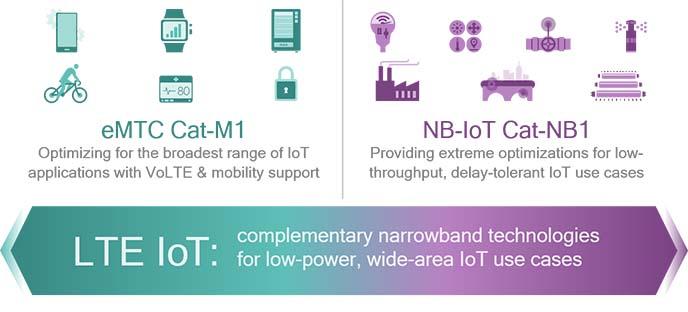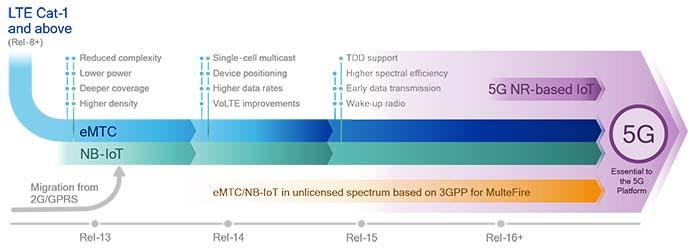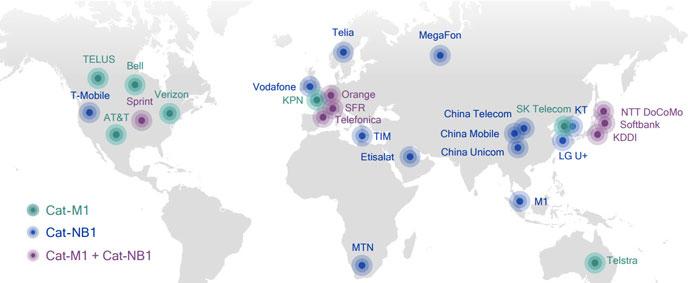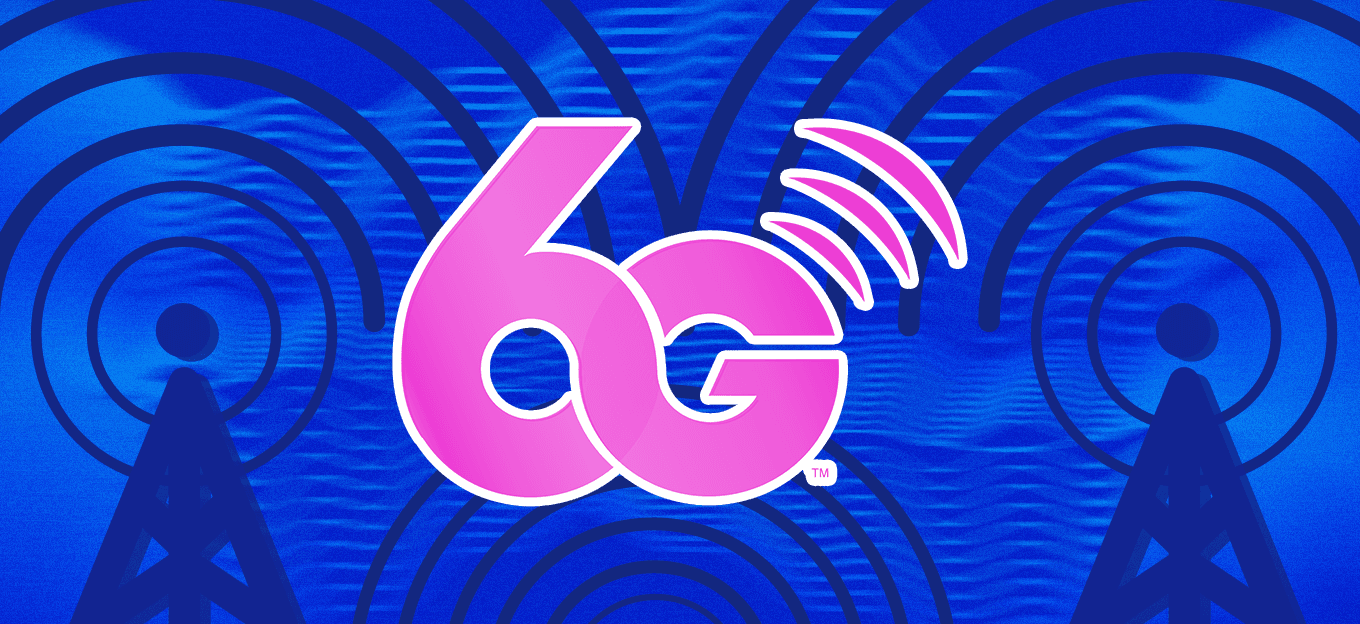eMTC and NB-IoT: Two Narrowband LTE Technologies Aimed at IoT
eMTC and NB-IoT: Two Narrowband LTE Technologies Aimed at IoT
- Last Updated: December 2, 2024
Qualcomm
- Last Updated: December 2, 2024



We're at the dawn of 5G, a unified network envisioned to connect virtually everything around us. And to get there sooner, we're accelerating 5G NR (New Radio) — the global 5G standard — to usher in next-generation mobile broadband experiences for smartphones starting in 2019.
The first 5G NR release delivers eMBB (enhanced mobile broadband) and URLLC (ultra-reliable, low-latency communication), which can also address high-performance IoT Applications. However, it will not target the low-complexity IoT (also referred to as massive machine-type communication or mMTC).
So how will we realize the 5G vision of connecting the massive IoT?
To be clear, the term “massive IoT” refers to the 10’s of billions of devices, objects, and machines that require ubiquitous connectivity even in the most remote locations, like sensors buried deep underground. To reach the massive scale (3GPP defines such as at least 1M devices per km2), mobile networks must more efficiently support the simplest devices that communicate infrequently, and are ultra-energy efficient so they can deliver extremely long, 10+ year battery life.
Sound challenging? You bet! But we don’t have to wait for 5G to start connecting the massive IoT. Here’s why…
3GPP has already introduced a suite of two complementary narrowband LTE IoT technologies in Release 13: eMTC (enhanced machine-type communication) and NB-IoT (narrowband Internet of Things). Both are optimized for lower complexity/power, deeper coverage, and higher device density, while seamlessly coexisting with other LTE services such as regular mobile broadband.
Together, they expand the LTE technology portfolio to support an even wider range of low-power IoT Applications.

Figure 1: Complementary eMTC & NB-IoT address a wide range of IoT Applications, Image Credit: QualComm
Do we really need both eMTC and NB-IoT to connect the massive IoT?
The answer is yes, since complementary eMTC and NB-IoT are designed for different types of IoT Applications.
eMTC can deliver up to 1 Mbps of throughput utilizing just 1.4 MHz of bandwidth, and supports essential capabilities such as VoLTE and full mobility for a broad range of IoT Applications, including asset trackers and wearables.
NB-IoT, on the other hand, scales down to extreme simplicity for low-throughput, delay-tolerant applications, such as meters and sensors. It enables data rate of just 10’s of kbps with 200 kHz of bandwidth, and can provide even deeper coverage. Furthermore, NB-IoT can be deployed within an existing LTE band, in guard-band between two regular LTE carriers, or in standalone mode, which provides an easy migration path for the re-farmed GSM (2G/GPRS) spectrum.
Beyond 3GPP Release 13, there is a rich roadmap of LTE IoT technology inventions that will deliver many further enhancements to meet tomorrow’s massive IoT connectivity needs.
For example, Release 14 will bring new capabilities such as single-cell multicast to both eMTC and NB-IoT, enabling easy over-the-air firmware upgrades as well as enhanced device positioning for asset location tracking. In addition, there are two ongoing Release 15 work items that further enhance eMTC and NB-IoT, including new features such as wake-up receiver and TDD support for NB-IoT.

Figure 2: LTE IoT evolution in 3GPP Release 13 and beyond, Image Credit: QualComm
It should be clear that LTE IoT is starting to connect the massive IoT today and both eMTC and NB-IoT will certainly continue to evolve for years to come — leveraging the scale, longevity and global coverage of LTE networks (also to seamlessly enable migration from 2G).
Eventually, there will be a 5G NR-based massive IoT solution. Some future advanced design elements will include NOMA (non-orthogonal multiple access), enabling grant-free transmissions leveraging RSMA (resources speared multiple access) — in which the device sends data whenever needed without asking for permission — and mesh networking that expands on LTE’s device-to-device capabilities.
Another exciting dimension is the expansion into unlicensed spectrum.
The MulteFire Alliance is adapting LTE IoT to operate in the unlicensed spectrum to expand beyond mobile broadband and high-performance IoT supported by MulteFire 1.0. This will in turn bring new opportunities for private LTE networks and enable LPWA (low-power wide-area) Applications, leveraging narrowband LTE IoT technology.
Mobile operators around the globe are also starting to launch commercial LTE IoT networks supporting both Cat-M1 and Cat-NB1 devices. At the time of writing this blog post, we see more than 20 mobile operators having publicly announced their commitment to deploy LTE IoT, with even more trialing eMTC and/or NB-IoT technologies in preparation for commercialization.

Image Credit: QualComm
All in all, the future of LTE IoT is bright, and we are excited to continue leading the LTE IoT evolution toward 5G.
Written by Hao Xu, Director of Engineering, Corporate R&D, Qualcomm Technologies Inc. Originally posted on the OnQ Blog.
The Most Comprehensive IoT Newsletter for Enterprises
Showcasing the highest-quality content, resources, news, and insights from the world of the Internet of Things. Subscribe to remain informed and up-to-date.
New Podcast Episode

Moving Past the Pilot Phase in IoT and AI
Related Articles



